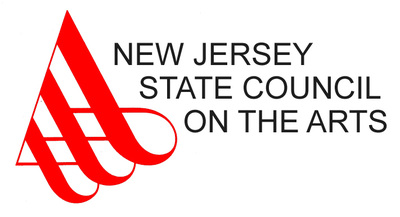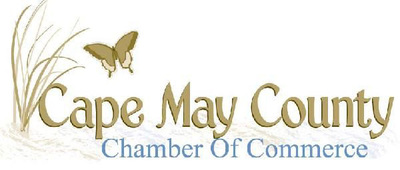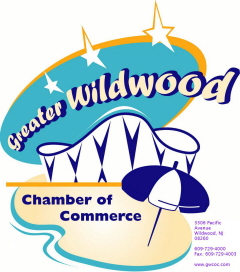THE DEATH OF SHERLOCK HOLMES?
A radio-style performance based on two stories by Sir Arthur Conan Doyle:
"The Final Problem" and "The Adventure of the Empty House"
Adapted and Directed by Mark Edward Lang
TWO WEEKENDS ONLY - Friday & Saturday
November 3 & 4, 10 & 11 at 8:00 PM
Location: ELTC at Cape May Presbyterian Church, 500 Hughes Street, Cape May, NJ
"The Final Problem" and "The Adventure of the Empty House"
Adapted and Directed by Mark Edward Lang
TWO WEEKENDS ONLY - Friday & Saturday
November 3 & 4, 10 & 11 at 8:00 PM
Location: ELTC at Cape May Presbyterian Church, 500 Hughes Street, Cape May, NJ
Enter the exciting world of fiction’s most famous detective, Sherlock Holmes, in what appeared (at the time) to be his final case, as told by his trusty companion Dr. Watson. Locked in a fierce battle with his arch-enemy, Professor Moriarty, they come face to face at Reichenbach Falls, and then…
This brand-new adaptation of two of Arthur Conan Doyle’s classic stories, “The Final Problem” and “The Adventure of the Empty House” (which follow each other in the Holmes timeline) is presented radio-style on East Lynne’s stage, at the historic Cape May Presbyterian Church.
Many of you will know the various adaptations of these characters-- famously starring Basil Rathbone and Nigel Bruce on film, and more recently Benedict Cumberbatch and Martin Freeman on television. But the Sherlock Holmes adventures were on the radio in the United States between 1930 and 1950. We continue in the tradition of those classic radio broadcasts.
This brand-new adaptation of two of Arthur Conan Doyle’s classic stories, “The Final Problem” and “The Adventure of the Empty House” (which follow each other in the Holmes timeline) is presented radio-style on East Lynne’s stage, at the historic Cape May Presbyterian Church.
Many of you will know the various adaptations of these characters-- famously starring Basil Rathbone and Nigel Bruce on film, and more recently Benedict Cumberbatch and Martin Freeman on television. But the Sherlock Holmes adventures were on the radio in the United States between 1930 and 1950. We continue in the tradition of those classic radio broadcasts.
THE COMPANY

EZRA BARNES (Holmes) appeared in East Lynne’s A Tale of Two Cities and Love Letters earlier this season and is very happy to be back. Select credits include: Off Broadway: Breakfast With Mugabe, Atticus in To Kill a Mockingbird (Queens Theatre in the Park), In White America (New Federal), Far and Wide (Mint). Regional: McCarter, Geva, Portland Stage, Hartford Stage, Cincinnati Playhouse, Denver Center, Pioneer, Paper Mill. TV: currently, the hit YouTube series Group, an innovative show about a therapy group, previously on New Amsterdam, Jessica Jones, Orange is the New Black, The Sinner, Bored to Death, Law & Order, SVU. Film: Motherless Brooklyn, birth/rebirth, Unintended, Noah, Joshua, Once More With Feeling. Ezra was awarded the Connecticut Critic’s Circle Award for Outstanding Direction for his production of Diary of Anne Frank at Playhouse on Park. He is the Founding Artistic Director of Connecticut’s Shakespeare on the Sound festival and lead the company from 1996-2008. Ezra is a Brooklyn resident, where he runs the Young Actors Workshop.

DAMON BONETTI (Moriarty / Lestrade / Dad) is happy to be back after playing Boolie in Driving Miss Daisy. Damon is a Philly born actor, director, musician, and teacher. Recent Acting: Twelfth Night (Lantern Theater) A Few Good Men (BRT) The 39 Steps (also director) Montgomery Theater. Recent Directing: They've All Gone And We'll Go Too (100th Meridian/Edinburgh and Philly Fringe), The Moors (Rutgers-Camden). Damon has performed or directed at many area theaters including the Walnut Street, PTC, Exile, Passage, Eagle, Hedgerow, and Theater Horizon. He is the Producing Artistic Director of the Philadelphia Artists’ Collective and appears on camera in commercials and films. Damon is a professor at Rutgers-Camden and Drexel Universities. MFA FSU/Asolo Conservatory. www.damonbonetti.net

KEN HORNBECK (Announcer / Steiler / Col. Moran) moved to Cape May from Atlanta a year ago, and is delighted to be making his East Lynne debut with this production. His lifelong passion has been working with children, teens and young adults, training them in how to use theater for self-expression, and as a tool to educate their peers about sexual decision-making, bias and other social issues. As an actor, favorite roles include: Buzz in Love, Valour, Compassion; Pirelli in Sweeney Todd and Hysterium in Funny Thing Happened…Forum. Thanks to Mark and Craig.

MARK EDWARD LANG (Playwright, Director, John H. Watson) is also the author and co-star of the biographical plays Zelda & Scott: A Life Affair (NJ, NYC and at the Fitzgerald Museum in Alabama) and Lunt and Fontanne: The Celestials of Broadway, which has been presented in New York (the NY International Fringe Festival, Stage Left Studio) and at the Classic Theatre (San Antonio, Texas). Regional theater credits include many shows with ELTC; recent work there includes Possessing Harriet (director), Who Am I This Time?, Biography, Zorro!, The Guardsman (opposite his wife, Alison J. Murphy), Why Marry? and Eugene O’Neill’s Anna Christie (also director). Other regional theater includes lead and featured roles in Ted Tally’s drama Terra Nova (Captain Scott), The Importance of Being Earnest (Jack), Stones in his Pockets and Welcome Home, Marian Anderson (Off-Broadway and tour). Recent work includes international performances in Tanzania, Istanbul and Copenhagen, Denmark with corporate training group Leadership-Masters. Member AEA, SAG-AFTRA and The Dramatists Guild.

JEFF SHARKEY (Stage Manager / Porter) is an actor & standup comedian who has appeared on stages in Atlantic and Cape May Counties since 2006. He’s appeared on TV's "Investigation Discovery Channel" in multiple true crime series. Jeff was last seen in ELTC's productions of Arsenic & Old Lace, and The Rainmaker in 2019.

SUSAN TISCHLER (Mrs. Hudson / Swiss Boy / Maid / Kid) has had the honor of working with East Lynne Theater in several projects over the years, including her role as Mrs. Mae Savel Croy in Helpful Hints in 2008, which was reprised in part in East Lynne's 2021 Vaudeville Variety show. She played Anne Cloudy in SPQR Production's The Wreck of the Spanish Armada and the title role in Calliope Rose. She is the co-owner of two Cape May retail stores – Kaleidoscope and Just for Laughs. She is The Answer Lady (an advice column) for Exit Zero publications. “The Bad Dad,” a memory of her father, appeared in Tim Russert’s best-selling collection of essays, Wisdom of Our Fathers, published in 2006.
ARTHUR CONAN DOYLE (Author) was born in Edinburgh, Scotland, in 1859. He entered the University of Edinburgh Medical School in 1881. One of his professors was Dr Joseph Bell, who became the model for Doyle's Sherlock Holmes by his powers of observation to help him deduce the nature of a patient's affliction. Conan Doyle began writing in school, to earn a little extra money, and his first story was published in 1879. When his father fell ill, Doyle became the breadwinner for the family. He worked for a time as a ship's doctor, then opened his own medical practice near Portsmouth. In his spare time, he did more writing.
His third attempt at a novel was A Study in Scarlet. This story, which introduced Sherlock Holmes to the world, was published in 1887. Encouraged by publishers to keep writing, Conan Doyle wrote his second Holmes mystery, The Sign of the Four, in 1890. So successful were these novels, and the stories which followed, that Conan Doyle could afford to give up his medical practice and devote himself to writing full time.
The first Sherlock Holmes short story, A Scandal in Bohemia, appeared in The Strand Magazine in 1891, to be followed by two dozen more stories over the next several years. The stories proved enormously successful, but Conan Doyle tired of his own creation, and
in 1894 he killed Holmes off in The Final Problem.
He underestimated the popularity of his creation. So great was the hold that the character of Sherlock Holmes had taken on the public imagination that Conan Doyle found himself at the center of a storm of controversy. Inundated with letters of protest, he eventually gave in and revived the character of Holmes, who appeared in numerous additional short stories over the next twenty-three years.
But Conan Doyle did not confine himself to Sherlock Holmes; he wrote several popular works of historic fiction, including Micah Clarke (1888), The White Company (1890), Rodney Stone (1896), and Sir Nigel (1906). Conan Doyle served as a doctor in the Boer War, and on his return he wrote two books defending England's participation in that conflict. It was for these books that he received his knighthood in 1902. After the death of his son in World War I, Conan Doyle became interested in spiritualism. He was convinced that it was possible to communicate with the dead, and his views led to a certain amount of ridicule from more mainstream society.
Sir Arthur Conan Doyle died in 1930. He can rightly be credited with helping create the literary genre of the detective story. Though Edgar Allen Poe's Dupin (featured in ELTC’s past production of The Poe Mysteries) pre-dates Sherlock Holmes, it was the Holmes' stories that solidified in the public mind what a good detective should be.
His third attempt at a novel was A Study in Scarlet. This story, which introduced Sherlock Holmes to the world, was published in 1887. Encouraged by publishers to keep writing, Conan Doyle wrote his second Holmes mystery, The Sign of the Four, in 1890. So successful were these novels, and the stories which followed, that Conan Doyle could afford to give up his medical practice and devote himself to writing full time.
The first Sherlock Holmes short story, A Scandal in Bohemia, appeared in The Strand Magazine in 1891, to be followed by two dozen more stories over the next several years. The stories proved enormously successful, but Conan Doyle tired of his own creation, and
in 1894 he killed Holmes off in The Final Problem.
He underestimated the popularity of his creation. So great was the hold that the character of Sherlock Holmes had taken on the public imagination that Conan Doyle found himself at the center of a storm of controversy. Inundated with letters of protest, he eventually gave in and revived the character of Holmes, who appeared in numerous additional short stories over the next twenty-three years.
But Conan Doyle did not confine himself to Sherlock Holmes; he wrote several popular works of historic fiction, including Micah Clarke (1888), The White Company (1890), Rodney Stone (1896), and Sir Nigel (1906). Conan Doyle served as a doctor in the Boer War, and on his return he wrote two books defending England's participation in that conflict. It was for these books that he received his knighthood in 1902. After the death of his son in World War I, Conan Doyle became interested in spiritualism. He was convinced that it was possible to communicate with the dead, and his views led to a certain amount of ridicule from more mainstream society.
Sir Arthur Conan Doyle died in 1930. He can rightly be credited with helping create the literary genre of the detective story. Though Edgar Allen Poe's Dupin (featured in ELTC’s past production of The Poe Mysteries) pre-dates Sherlock Holmes, it was the Holmes' stories that solidified in the public mind what a good detective should be.













